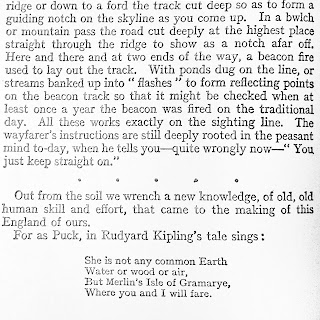The fourth point on Arnolfini Ley is Alessandria, a city in Piedmont, Italy, known Borsalino hats and for being the birthplace of Umberto Eco. Umberto Eco is famous as a writer, philosopher and semiotician, as well as a collector of rare books. Since we are dealing with leylines, it is his extraordinary collection of books on "wrong, zany and occult science, as well as on imaginary languages" (Carriere, p 131) and his views on false beliefs is what we are interested in.
My collection is very focused. It is a Biblioteca Semiologica, Curiosa, Lunatica, Magica et Pneumatica, or 'a collection dedicated to the occult and mistaken sciences'. (Umberto Eco in Carriere, p 127)
As a rare books collector I am fascinated by the human propensity for deviating thought. So I collect books about subjects in which I don’t believe, like kabbalah, alchemy, magic, invented languages. Books that lie, albeit unwittingly. I have Ptolemy, not Galileo, because Galileo told the truth. I prefer lunatic science. (in Zanganeh)
I have found remarkably little about Umberto Eco’s collection of books. My own knowledge comes from his conversation with Jean-Claude Carriere published as This is not the End of the Book. Eco himself had admitted that he did not show his collection to many people. “A book collection is a solitary, masturbatory kind of phenomenon, and you don’t often come across people who share your passions.” ((Carriere, p 327) Umberto Eco has 50000 books in his various homes as well as 1200 rare titles. Although a fast reader himself (with a phenomenal memory too) many of the books in his library he had not read. Most of the collection he had accumulated is for research. He does not go to bookshelves to choose what to read, he says. He goes to pick up the book he needs.
Here is a fascinating walk though his library:
 |
| Malleus Maleficarum 1487 |
 |
| An excellent visualisation of Kircher’s reasoning for why the Tower of Babel could never reach the moon. According to his calculations, such structure would cause the Earth revolve on its axis. From his Turris Babel, 1679 (St Andrews copy at r17f BS1238.B2K5) |
The collection, of course, reflects Eco’s fascination with the potential of erroneous thinking, fantasy and mistakes. Like Flaubert, he says, they both adored silliness. (Carriere, p 131). This pursuit of utopias, fairy-tales and generally wishful thinking, is responsible for a number considerable inventions and discoveries. In Serendipities: Language And Lunacy Eco discusses such events. Christopher Columbus, for example, who stumbled upon America, when looking for India, believing that the Earth was much smaller than it was. Or the Donation of Constantine. Or Marco Polo discovering rhinoceros and believing he had found unicorns (which, were not as gentile animals, as he had expected). Or even the persistent search for Eldorado, which fuelled numerous expeditions.
I am fascinated by error, by bad faith and idiocity. (Umberto Eco in Carriere, p 131)
“Fascinated” is the correct word to describe Eco’s attitude towards the power of falsity. Eco is respectful and never depreciative, because “even the most lunatic experiments can produce strange side effects, stimulating research that proves perhaps less amusing but scientifically more serious” (Eco, Serendipities, p.8)
At a certain historical moment, some people found the suspicion that the sun did not revolve around the earth just as crazy and deplorable as the suspicion that the universe does not exist. So we would be wise to keep aan open, fresh mind against the moment when the community of scientists decrees that the idea of the universe has been an illusion, just like the flat earth and the Rosicrucians.
After all, the cultivated person’s first duty is to be always prepared to rewrite the encyclopaedia. (Eco, Serendipities, p.21)
Eco’s inquisitive and openminded attitude towards erroneous, fantastic and wishful theories is helpful when dealing with ley lines: they started as Watkins' mappings of ancient trackways and culminated as New Age fantasies and mysteries.
Our Arnolfini Ley relies on the same principle as Watkins' leys - it connects the points of importance, which by randomness, luck or divine intervention happened to be on a straight line. We understand that our ley might not be a scientifically sound mapping of objects - as you would expect from a mapping grounded in a theory of mysticism, false science and erroneous thinking. However, this wishful theory when applied to our reading maps, has revealed sacred aspects of the book, and elegant physical as well as metaphysical alignments between body and book.
It is easy to dismiss ley lines as far fetched, but like with the cases of erroneous thinking mentioned above, there is always a possibility of changing the angle or context of interpretation to reveal the potential and inspiration for another discovery.
[Egidija]The attraction of cranks to leylines is naturally no encouragement to take them seriously: but neither it is a reason for the subject to be rejected. (Timpson, p.8)
REFERENCES:
Carriere, Jean-Claude; Umberto Eco (2009) This is not the End of the Book. London: Harvill Secker
Eco, Umberto (1998) Serendipities : Language and Lunacy. Translated from Italian by William Weaver. New York: Columbia University Press.
Timpson, John (2002) Timpson’s Leylines. A Layman Tracking the Leys. London: Cassell Paperbacks
Zanganeh, Lila Azam (2008) Umberto Eco, The Art of Fiction No. 197. The Paris Review. Issue 185. [Online]. Available at https://www.theparisreview.org/interviews/5856/umberto-eco-the-art-of-fiction-no-197-umberto-eco (Accessed: 18 March 2017)
















































